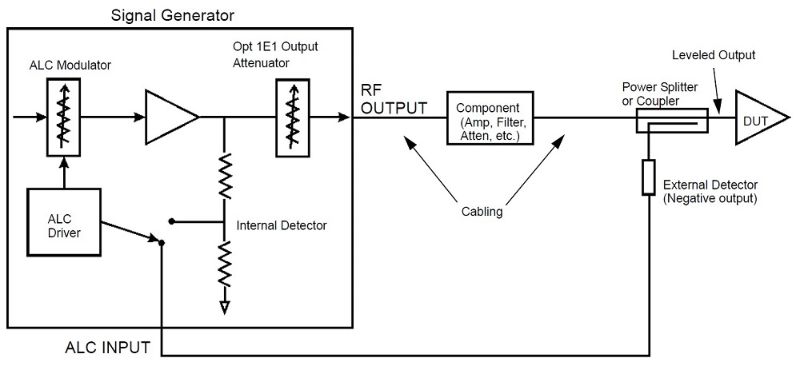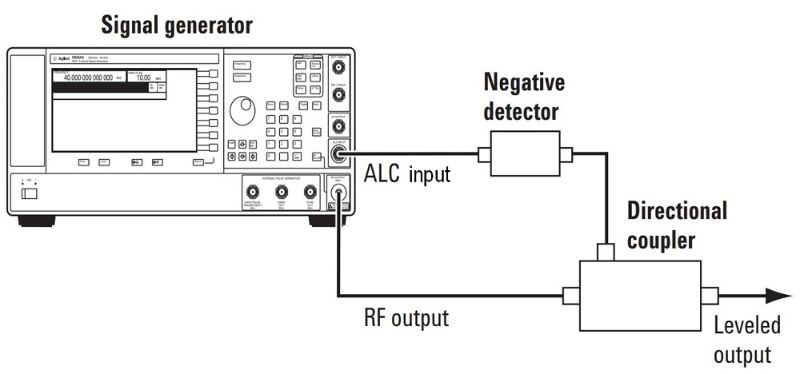
How to Overcome Power Drifts with External Leveling
Written by Tit Bin Teo, Technical Engineering Manager
Long cables and switches cause signal attenuation through cable loss. We introduced flatness correction which compensates for signal attenuation in an earlier blog post "What Is Flatness Correction and Why it Matters." However, flatness correction has a couple of major drawbacks.
First, flatness correction compensates for the cable loss at the time and environment when the correction was performed. The condition of cables, and especially relays, degrades with time, and this causes cable loss to increase. Second, flatness correction cannot compensate for signal generator output power drifts. The output power of the signal generator will drift with time and temperature. Therefore, the user flatness array requires updates when the ambient temperature drifts by more than 5°C from the temperature at which the signal generator was calibrated.
What is External Leveling?
The RF output power of the signal generator is constantly monitored and controlled by the automatic leveling control (ALC) circuit to ensure the output power does not drift due to temperature or over time. The ALC senses and maintains RF power at the output of the signal generator. External leveling works the same way as the ALC except that the output power is sensed and controlled at a point away from the output of the signal generator. External leveling is useful when you want to ensure the power delivered to the input of your device under test (DUT) is accurate, especially when you are concerned with output power drifts due to linearity error, temperature, or aging.
Why is External Leveling Useful?
External leveling sounds similar to flatness correction. In fact, both techniques try to achieve the same objective, which is to ensure you compensate for errors caused by cables, switches, and amplifiers that connect your signal generator to your DUT. However, both techniques address different sources of errors. Even though external leveling corrects for drifts and errors in real time, it is not a replacement for flatness correction. One reason is that external leveling is much slower than flatness correction, especially when you need to sweep through a wide frequency span. The ALC loop settling time ranges from 1 ms to 5 ms. External leveling is also more complicated to set up, and you need to use a directional coupler and a negative detector. External leveling reduces errors due to amplifier drifts when the ambient operating temperature changes. External leveling is a good solution if you use an amplifier to condition the signals from the signal generator and anticipate changes in ambient temperatures.
Flatness correction works best if you just want to compensate for losses caused by passive components such as cables, switches, and attenuators and do not foresee output drifts from changing ambient temperatures.
How External Leveling Works
The power level at the DUT input is feedback to the signal generator that uses a coupler and negative detector. Figure 1 is an illustration of an external leveling block diagram.

Figure 1. An external leveling block diagram showing the ALC circuitry
The external detector will convert the power detected to a negative voltage which is sent to the signal generator’s ALC INPUT. As the RF power level changes, the external detector returns a compensating negative voltage. The ALC circuit uses this negative voltage to level the RF output power by raising or lowering the signal’s power, thus ensuring a constant power level at the point of detection. Unfortunately, as the signal power is not measured directly at the input of the DUT, but through a coupler, there is some power loss that cannot be compensated. Power loss happens when the coupler siphons some of the signal’s energy to drive the external detector. To ensure you get the right correction, be sure to update your signal generator with your coupler’s coupling factor. Typically, this value is from -10dB to -20dB.
Figure 2 shows the input power vs. output voltage characteristics for a typical diode detector. Using this chart, you can determine the power at the diode detector input by measuring its output voltage.

Figure 2. Typical diode detector response at 25°C
When using an external detector, your signal generator’s output power range will be less than its specified output range. Part of the output power is siphoned to the detector circuit and converted to voltage. Power loss also occurs through insertion loss at the coupler. To eliminate insertion loss, ensure that your detector, coupler/power splitter are specified for the power and frequency range that you need.
Caution! While operating in external leveling mode, if either the RF or the DC connection between the signal generator and the detector is broken, you may experience maximum signal generator power. This maximum power surge may damage the power-sensitive DUT.
Figure 3 shows a typical external leveling setup with a signal generator.

Figure 3. Typical external leveling connection setup
Learn More
If you use amplifiers to condition your test signals and need to compensate for output drifts due to temperature changes, use external leveling to significantly improve output power accuracy. Just be sure to use the negative detector recommended by your signal generator’s manufacturer to achieve the best accuracy.
Build a solid foundation for your signal generator knowledge with our “The Essential Signal Generator Guide” whitepaper. Download it and start learning about signal generators today.